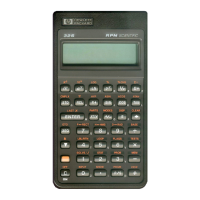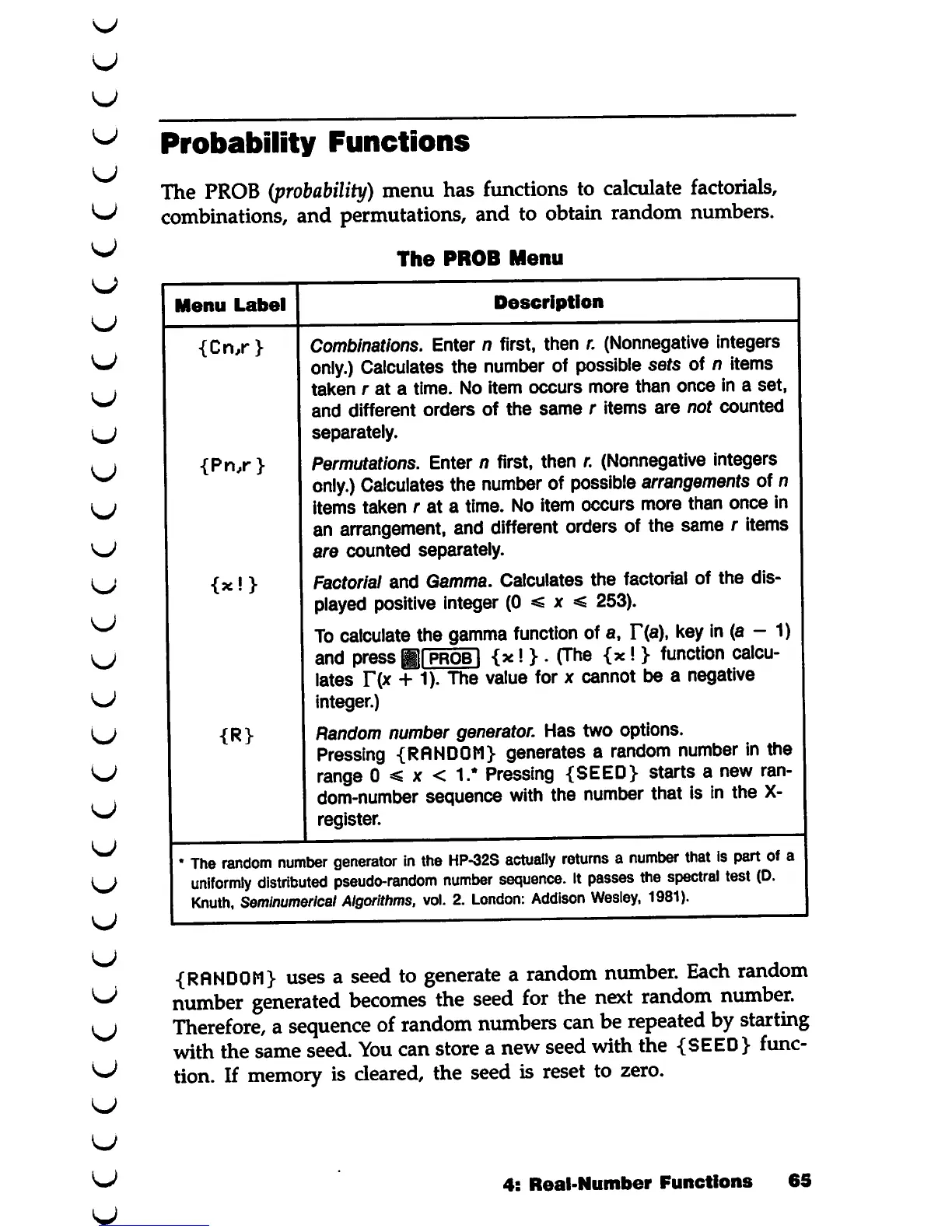Probability
Functions
The
PROB
(probability)
menu
has
functions
to
calculate
factorials,
combinations,
and permutations, and to
obtain
random
numbers.
The
PROB
Menu
Menu
Label
{Cn,r}
{Pn,r}
{*!}
{R}
Description
Combinations. Enter n first, then
r.
(Nonnegative integers
only.)
Calculates
the
number
of
possible
sets of n
items
taken
r
at
a time. No item
occurs
more
than
once
in a
set,
and different orders of
the
same
r items are not counted
separately.
Permutations. Enter n first,
then
r. (Nonnegative integers
only.)
Calculates
the
number
of
possible
arrangements
ofn
items taken r at a time. No item occurs more than once in
an
arrangement,
and
different
orders
of the samer
items
are
counted
separately.
Factorial
and
Gamma.
Calculates the factorial of the dis
played
positive
integer
(0
«s
x <
253).
To
calculate
the
gamma
function
ofa,
T(a),
key
in
(a - 1)
and
pressBIprobI
{*!
}.
(The
{x!
}
function
calcu
lates T(x + 1). The
value
for x
cannot
be a
negative
integer.)
Random
number
generator.
Has two options.
Pressing
{RANDOM}
generates a
random
number
in
the
range 0 < x <
1.*
Pressing {SEED} starts a new ran
dom-number
sequence
with
the
number
that is in the
X-
register.
The
random
number
generator
in
the
HP-32S
actually
returns
a
number
that
is
part
of a
uniformly
distributed
pseudo-random
number
sequence.
It
passes
the
spectral
test
(D.
Knuth,
Seminumerical
Algorithms,
vol.
2.
London:
Addison
Wesley,
1981).
{RANDOM}
uses
a
seed
to
generate
a
random
number.
Each
random
number
generated
becomes
the
seed
for
the
next
random
number.
Therefore,
a
sequence
of
random
numbers
can
be
repeated
by
starting
with the sameseed.
You
canstorea new seedwith the
{SEED}
func
tion. If
memory
is
cleared,
the seed is reset to
zero.
4:
Real-Number
Functions
65

